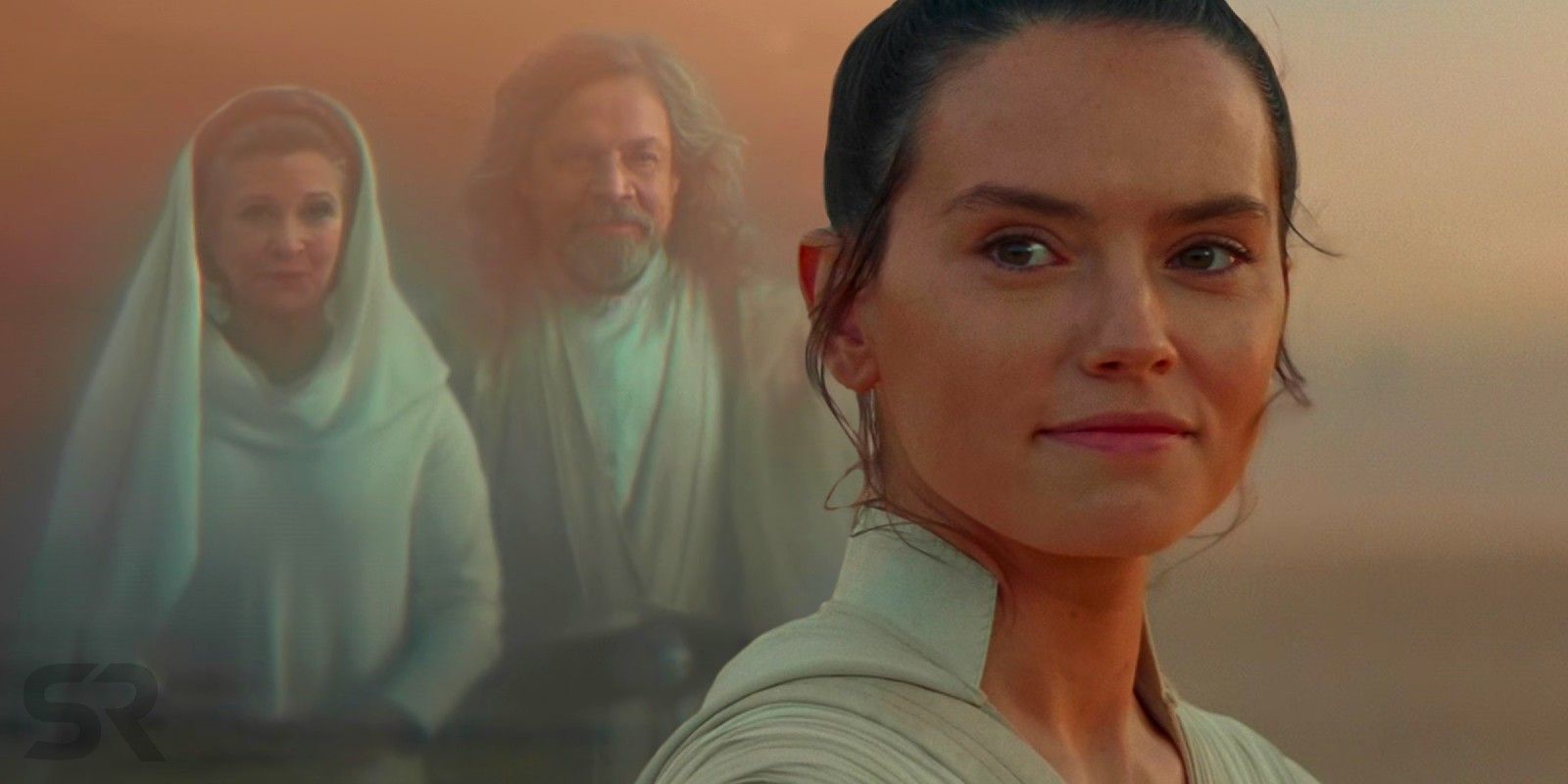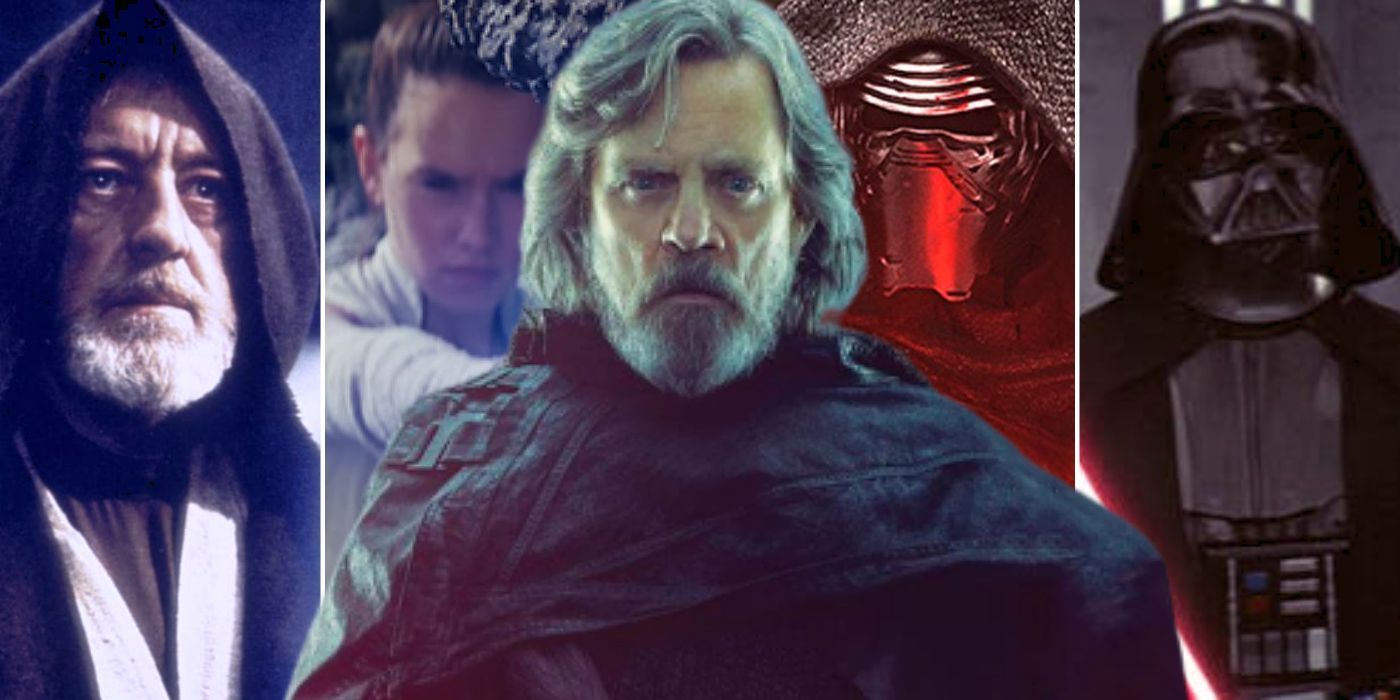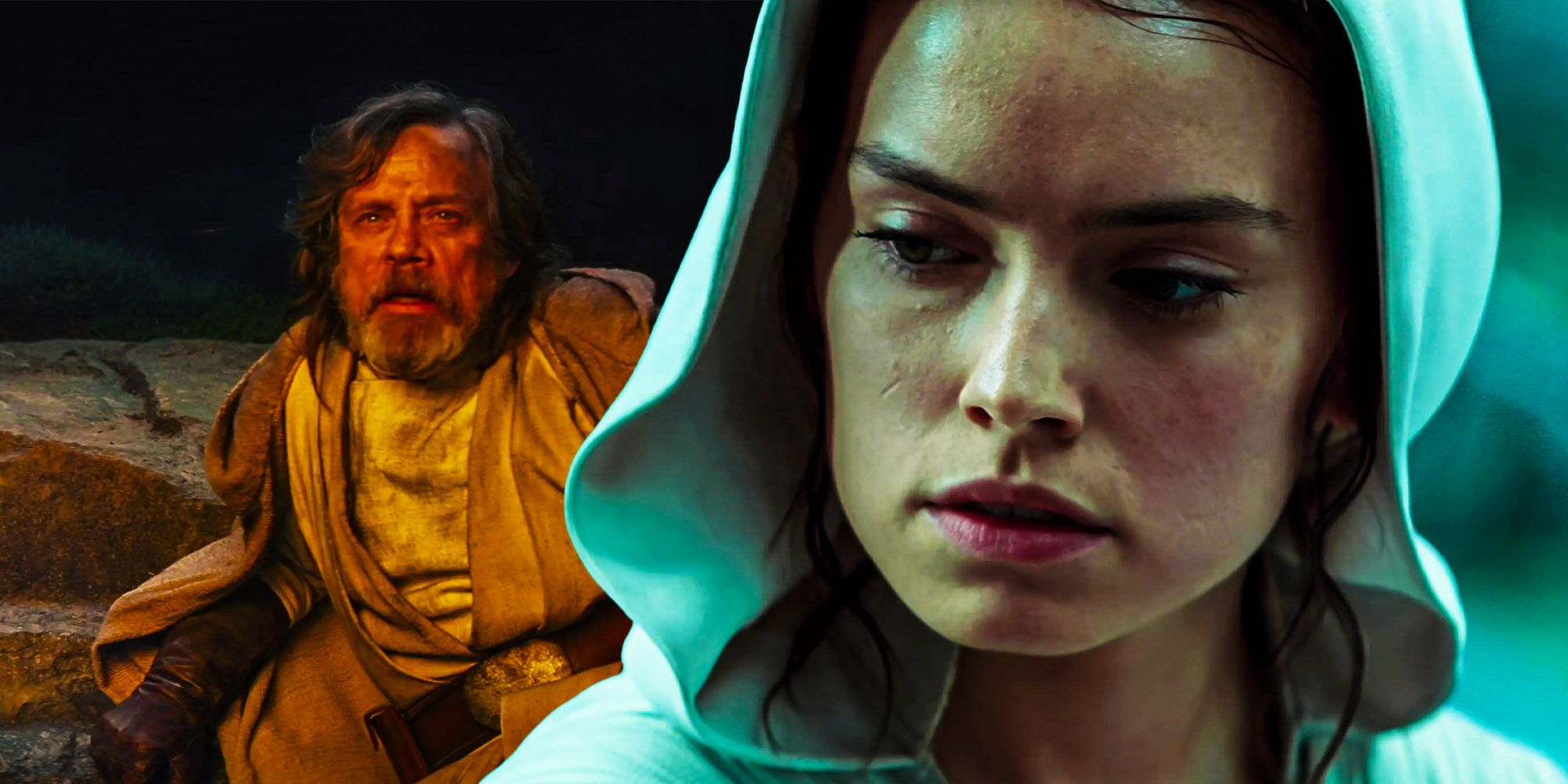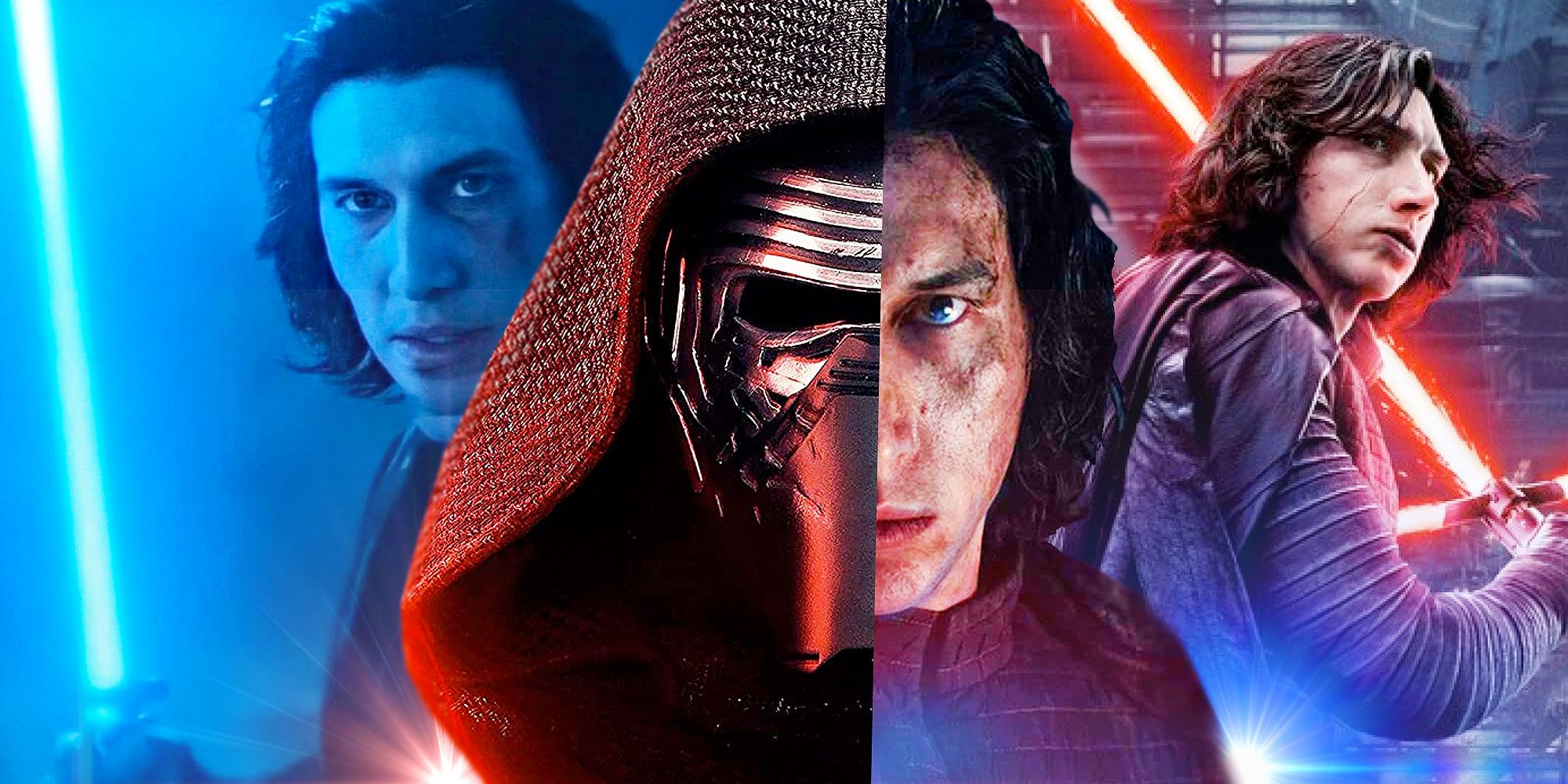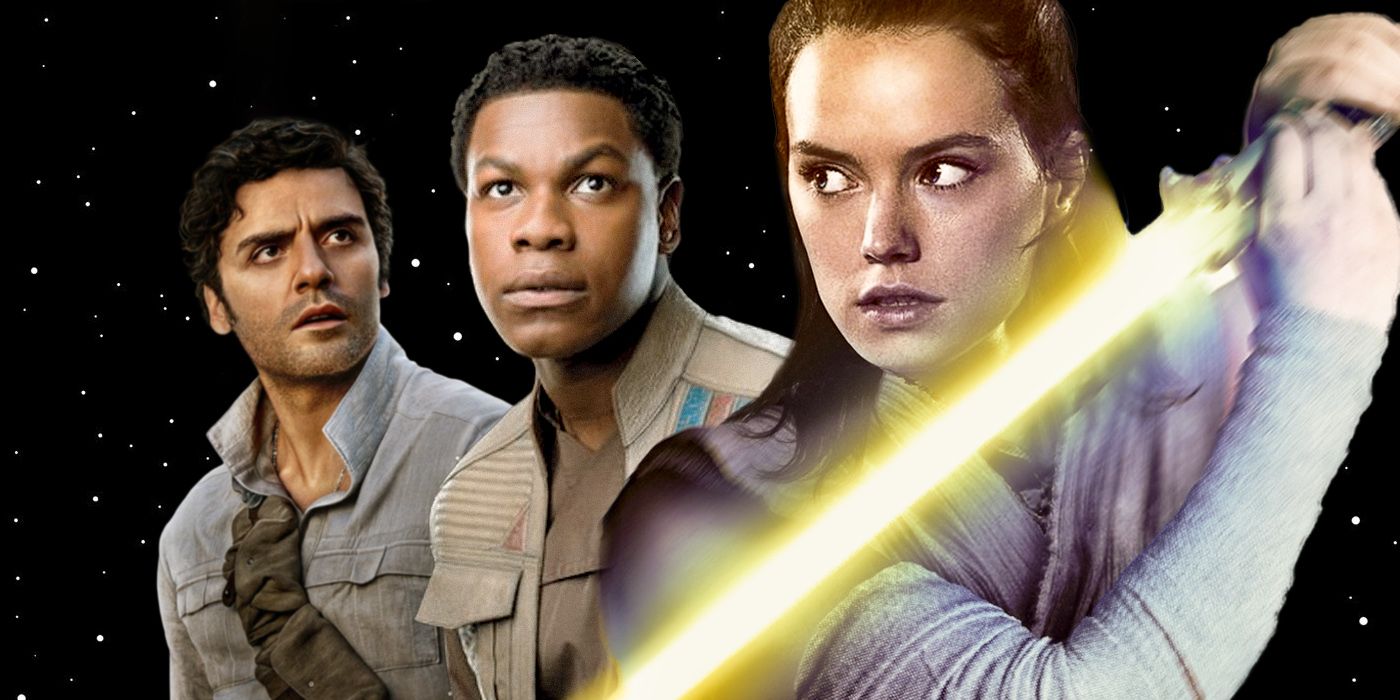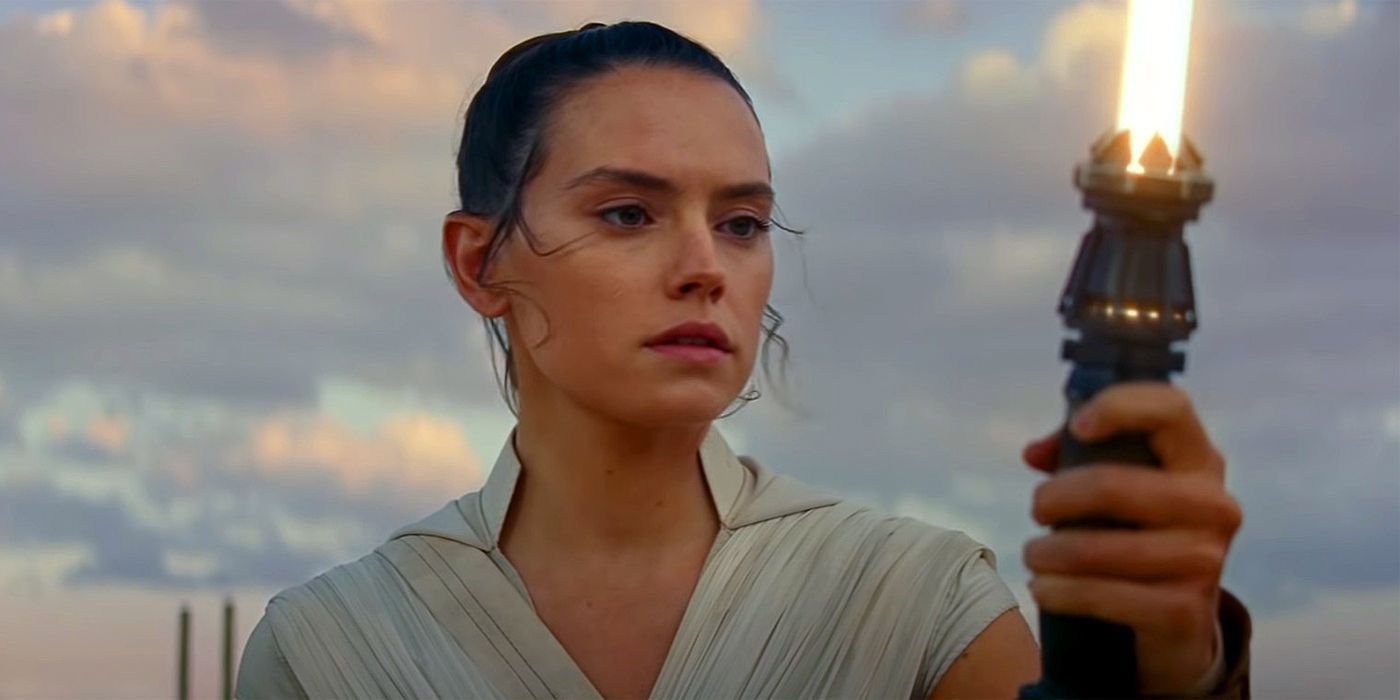Rey's ending in Star Wars: The Rise of Skywalker is widely considered the final disappointment of the sequel trilogy, but it also undermines the entire narrative arc of the three movies. The Star Wars sequel trilogy remains divisive among the franchise's audience and has faced criticism for a number of reasons. Chief among them was the sequel trilogy's narrative inconsistency, with plot threads picked up, dropped, and picked up again all in the space of just three films.
By introducing three new heroes - Rey, Finn, and Poe - alongside the return of the original trilogy's protagonists, the Star Wars sequels attempted to tell a story that would appeal to both the franchise's existing fanbase and a newer audience. Exactly how successful this was is a matter of opinion, with the sequel trilogy subjected to harsh criticisms of its story, characters, and general handling of the larger Star Wars universe. However, the Star Wars sequels did attempt to explore one or two deeper themes within the epic sci-fi franchise's story.
One of the sequel trilogy's major themes was - fittingly - moving on from the past, particularly within the context of overcoming one's circumstances or personal history. While this is a key element of the trilogy's overall story, Rey's ending in Star Wars: The Rise of Skywalker actually managed to undermine the entire theme in a matter of seconds. By taking on the Skywalker name, Rey shows that she's effectively learned absolutely nothing from the sequel trilogy's story.
The Star Wars Sequels Tried To Bring Balance To The Force
A major theme throughout the entire Skywalker Saga is the idea of its heroes bringing balance to the Force. Starting with young Anakin Skywalker in Star Wars: Episode I - The Phantom Menace, the saga's heroes are often hinted to be capable of bringing balance to the Force, although this rarely works out the way it seems as though it should. Luke Skywalker (with the help of Yoda's Force ghost) chooses to destroy the sacred Jedi texts in Star Wars: The Last Jedi, seemingly doing away with the tired Jedi dogma.
Interestingly, the sequel trilogy seems to angle itself towards finding true balance in the Force. While previous movies had referenced the idea, the specifics of how it would work with regards to the Jedi and Sith weren't fully explored within the films, and the Star Wars sequels attempted to balance the Force within its narrative arc. The idea of balancing the Force certainly wasn't a new one, but the sequel trilogy sought to bring a definitive end to the notion.
Luke And Rey Both Abandon The Old Jedi Dogma
One of the major themes of Star Wars: The Last Jedi is Luke's disillusion with the Jedi Code and the way that it factored into his self-imposed exile on Ahch-To. With the brief context of Luke's part in Ben Solo's turn to the dark side, the film addresses the way in which Luke has begun to question the Jedi's ways. This ultimately culminates in Luke destroying the sacred Jedi texts with the help of Yoda's Force ghost, marking a departure from the established tradition of Force users. However, in doing so, it seemingly shows that Luke Skywalker doesn't understand balance in the Force - something that he apparently passes on to Rey.
Rey's exact intentions after Star Wars: The Rise of Skywalker are explicitly stated. However, the film's final scene, which sees her take up the Skywalker name, does offer one small visual clue as to the future of Rey's Force journey. Her yellow lightsaber is often seen as the sequels' somewhat clumsy way of showing that Rey no longer subscribes to the traditional ideals of the light and dark sides of the Force, although this isn't explored in quite the same sense as Luke's own questioning of the Jedi's ways. The specific meaning of Rey's yellow lightsaber is likely deeper than a simple abandonment of Jedi tradition, but on a visual level, it certainly seems to be just that.
Ben Solo's Fall (& Redemption) Prove The Dark Side Isn't Pure Evil
The parallel to Luke Skywalker's sequel trilogy story is Ben Solo's: Leia and Han's son and Luke's former Padawan who was manipulated into turning to the dark side of the Force. Adopting the name Kylo Ren, Solo acts as one of the sequel trilogy's main antagonists, although his redemption in Star Wars: The Rise of Skywalker is actually a particularly pertinent point in the trilogy's story. Essentially, the love of his family and Rey is enough to bring Solo back from the dark side, and that's a significant development in the sequels' overall story.
After his redemption, Ben Solo is seemingly more powerful than he was as Kylo Ren, but his ability to recover from the dark side's hold on him is an interesting idea in its own right. It shows that, within the sequel trilogy, the dark side isn't as absolute as it would appear, and that its corruption isn't absolute. The plot development wasn't the most well-loved by audiences, but its implications are far-reaching, and it was another aspect of the sequels let down by Rey's Skywalker ending. While Kylo Ren is implied to have moved on from his past during his redemptive final arc, Rey's Skywalker name change suggests that such a transformation is actually impossible.
The Sequels' Heroes All Overcome Their Pasts
The Star Wars sequel trilogy's new heroes each have a past that's relatively independent of previous movies. While this serves to separate the sequels somewhat from the other installments to the Star Wars franchise, it also made for something new and relatively unpredictable with regards to the trilogy's story. While the general characterization of the Skywalker Saga's new trio of heroes was something many disagreed with, the intention was to give them each a backstory that allowed for development within the trilogy's own narrative.
Most of the new characters in the sequel trilogy are forced to overcome their pasts as part of their respective stories. Finn overcomes his conditioning to defect from the First Order and aid the Resistance, and Ben Solo overcomes the hold the dark side has on him. Rey herself is also revealed as the daughter of one of Palpatine's failed clones, meaning that she too must overcome her lineage (and the emotional scars of having been abandoned as a child). By having a number of its heroes overcome their respective histories, the Star Wars sequel trilogy embraces the theme of moving on from the past – until Rey's radical name change.
How Rey Skywalker Betrays The Sequels' One Running Theme
After Star Wars: The Rise of Skywalker's Rey Palpatine twist, the film managed to undermine the trilogy's own story even further by having Rey take up the Skywalker name. In doing so, Rey dispels any notion that she (and, by extension, future generations of Jedi) will actually move on from the past, instead blindly adopting a name for purely sentimental reasons. In rewriting her own identity, Rey proves that she's not learned how to properly let go of the past.
This effectively undermines the only real narrative theme that carries across each of the sequels. Rey's identity in relation to her past was central to the trilogy, and although it seems she's moved beyond her focus on the past, her new identity says otherwise. One of the very few things that sequels did consistently was the exploration of that exact theme, and Rey's final moment in Star Wars: The Rise of Skywalker shows that she's learned nothing at all from the trilogy. In this way, her decision is actually much more damaging to the story as a whole than may seem first apparent.

